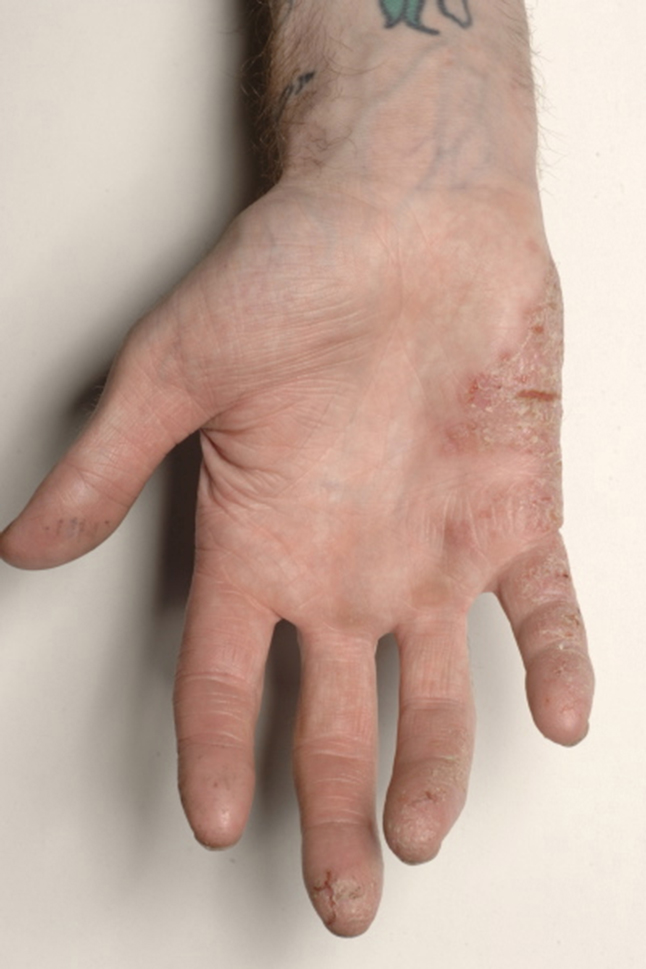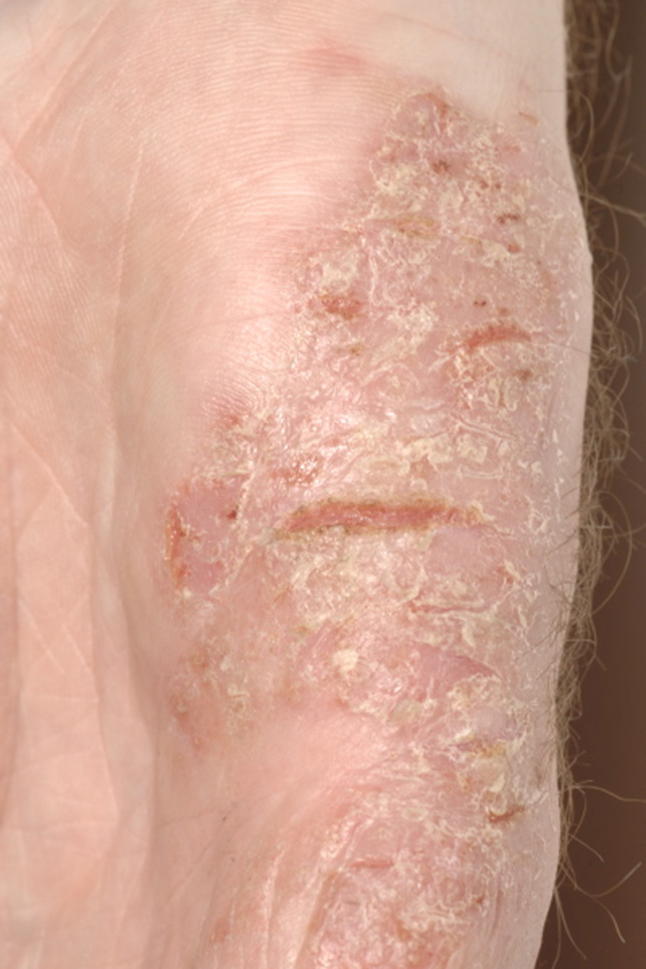-
(a) What are the differential diagnoses?
Show Answer
Psoriasis, tinea infections and atopic eczema including pompholyx may affect mainly the hands. These need to be differentiated by detailed history and examination. Psoriasis can be worsened with friction and tinea manum (should be manuum) is usually unilateral.
-
(b) What is the likely diagnosis?
Show Answer
This is likely to be hand eczema. This is usually itchy and 5–10% of the population are affected during their life. Endogenous dermatitis, allergic contact dermatitis and irritant contact dermatitis need to be differentiated. Certain occupations such as nursing are more prone to hand eczema including irritation and allergy. Senior nurses with atopy, multiple hand washes during the day and wearing gloves for prolonged periods of time are particularly at risk.
-
(c) What investigations would you do?
Show Answer
This nurse needs patch testing which is a specialized technique where allergens are applied to the patient’s back to detect delayed hypersensitivity causing allergic contact dermatitis. He also needs skin prick tests and RAST blood test to exclude immediate (type 1) latex allergy. Other tests needed are skin scrapings for mycology to exclude tinea infection.
-
(d) Are there any side effects from these tests?
Show Answer
Patch tests can cause severe blistering reactions, which are extremely itchy. These can rarely cause scarring, pigmentation changes and active sensitization. Skin prick testing to latex is generally safe but can rarely cause general systemic symptoms with collapse and anaphylaxis.
-
(e) How would you manage this man?
Show Answer
Potent topical steroids can be used for short periods (e.g. 6 weeks). Skin protection with suitable gloves, regular emollients and hand care is essential. He needs to avoid any irritants and allergens causing the dermatitis. Allergens confirmed with patch testing need to be avoided strictly and it can take up to 6 weeks to see any benefit in the skin. If any improvement occurs then continued avoidance is essential and can indicate a good prognosis.



